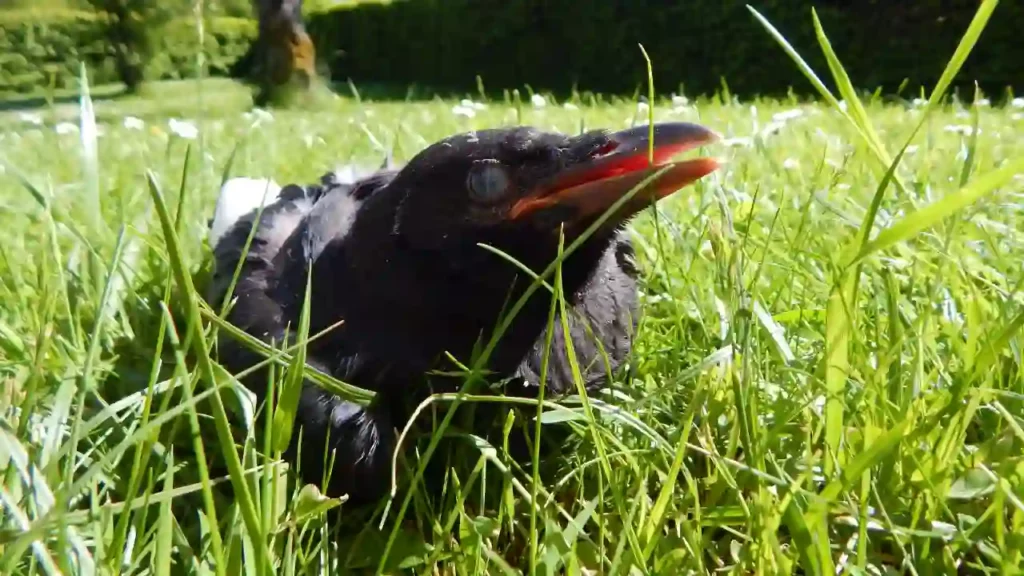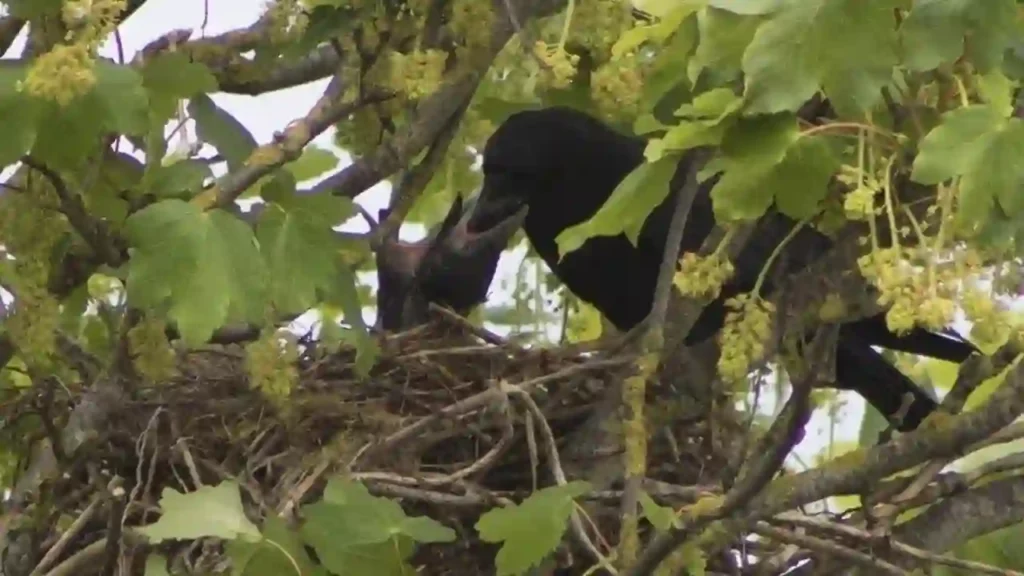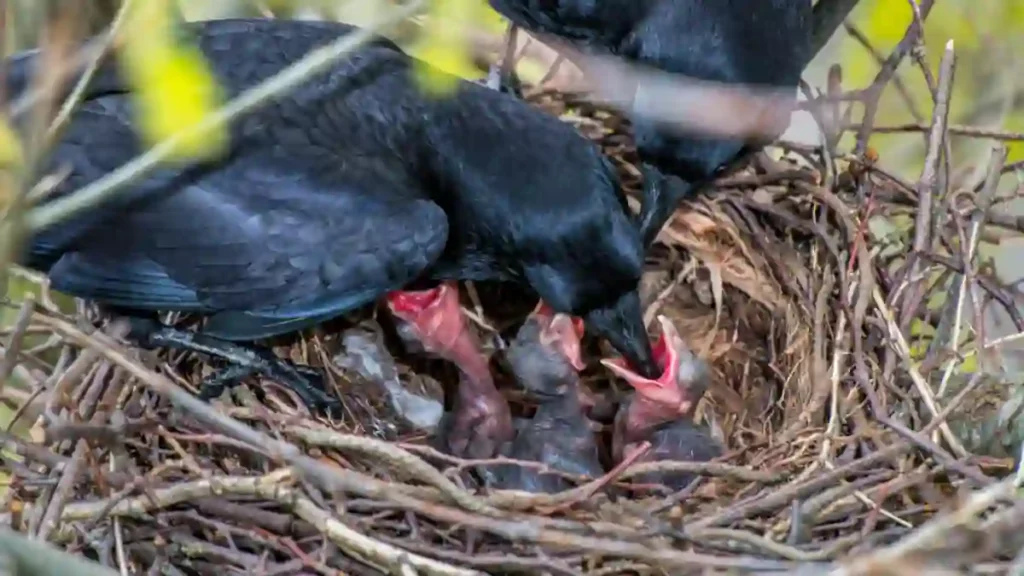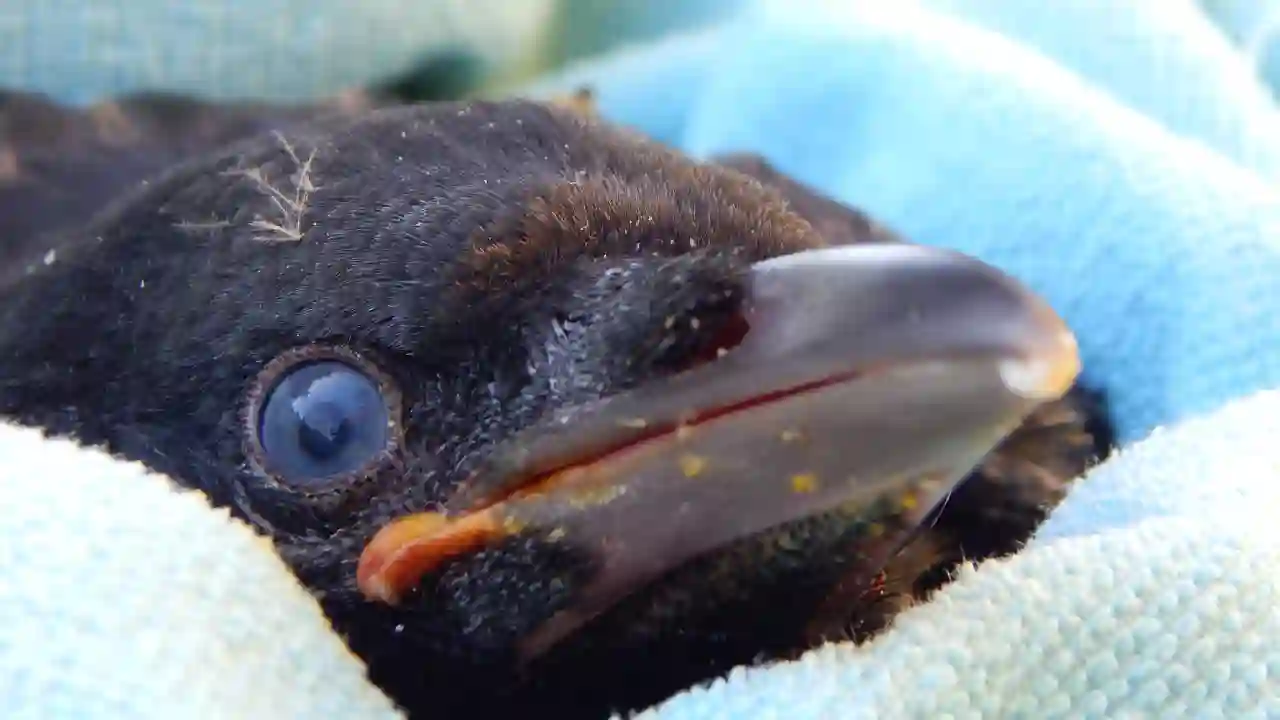Crows are black birds that are easily distinguishable by their noisy, harsh caw. They are known to be intelligent and have a high degree of adaptability. They are exceptionally sociable creatures who hunt, forage, and jointly defend their territorial claims. They are very kind to their younger children.
So, why do you never see baby crows? The most significant reason is that baby crows are nearly the same size as adults when they can fly. This means you may see baby crows, yet you won’t be able to tell what species they are. Their duller plumage and somewhat broader beaks should alert you to their young status.
The majority of crow species don’t often build nesting colonies. Each mating couple has its own nest, which is often located high up in a tree and is constructed out of sticks and twigs.
It is interesting to learn about these harsh singers, but a question that often pops up in people’s heads is why we don’t get to see baby crows as we see chicks or ducklings.
Reasons Why You Never See Baby Crows?

Four reasons why you don’t see baby crows are:
#1. Their nests are very high up in the trees
Crows belong to the family of corvids, which is known to possess features of the intelligentsia.
Already anticipating the dangers that their hatchlings may face from the predators, crows frequently construct their nests at great heights in the trees, and they are fiercely devoted to the protection of their partners and young ones.
Additionally, parents are overprotective. They are always on the lookout for people and other predators and hence always shielding their babies. That’s why you can’t see baby crows generally.
#2. Young crow never leave their nest
Crows are altricial beings, that is they are born prematurely. They are mostly dependent on their parents for all their needs, such as food, nourishment, and warmth.
The only time young crows leave their nests is if they accidentally fall out. Baby crows without feathers are content to be cared for by their parents in their warm, snug nests.
They leave the nests after they are completely fledged and sometimes, they even have to be driven away from their nests, that’s a good reason, you never see baby crows out of nests.
#3. People confuse crow babies with standard adults
Even when babies leave their nest, by the time they are grown into a body that almost looks like of that an adult crow.
When young crows fly away from their nests, they resemble typical adult crows in terms of size. It’s not as in humans where the difference between an adult and an infant is fairly conspicuous.
If you want to identify a baby crow, there are a few tell-tale indicators that help you spot the newborns in the flock.
For instance, juvenile crows have pink mouth interiors.
Humans have a very tough time distinguishing between baby crows and adult crows but now that you know what indicators to look for, you will be able to tell them apart easily. (1)
#4. Parents keep them covered with foliage
Before they can fly, crow babies abandon their nests and they remain on the ground for a few days until they have mastered the art of flying.
These learning chicks are swiftly buried behind a bush by parent crows who are often tracking them down. Due to this, we barely get to see them.
Parents do this to avoid the risk of injury from possible predators including dogs, big cats, raccoons to young crows.
These babies can be killed and eaten by them. Humans could also unintentionally hurt baby crows that are lying on the ground.
So, to ensure protection, parents act as avid guards and bury them in the shrubs before any human or animal gets to see their baby crows.
What do baby crows look like?

Crows produce altricial offspring, which means their babies are devoid of any fur and feather unlike chicks and all you can see is squishy, ugly, skin that is not particularly attractive.
As they approach fledging age, crows undergo the same transformation as other altricial bird youngsters from ugly to funny looking.
Crow babies are born with their eyes closed, entirely naked, and reliant on their parents for warmth, nourishment, and care. Baby crows’ ability to regulate their body temperatures is underdeveloped, therefore they always need an external source of heat.
By the time baby crow is 7 to 10 days old, the chicks’ eyes open up. The initial pin feathers and insulating down feathers emerge at the same time and quickly cover the chick in a thin coating of feathers.
By the time they are three weeks old, the chicks have enough feathers to cover the majority of their bodies. At this young age, the eyes are clear blue, while the pink beak’s hue starts to deepen.
At this point, the species-specific colour marks start to show. By this point, the chicks are robust and active, and after a few weeks, they start to stand on their own.
How many babies do crows have?
Crows lay around five to six greenish-to-olive-coloured eggs with darker speckles that they deposit in their nests.
Before mating on their own, the young crows may stay with their parents for up to six years.
What To Do If You Find A Baby Crow?

If you find a baby crow, the first thing you should do is call your local wildlife rehabilitation centre. They will be able to help you determine if the crow is truly orphaned and in need of care, or if it is still being cared for by its parents.
If the rehabilitation centre determines that the crow does need to be taken in, they will be able to provide the proper care and ensure that the crow is returned to the wild when it is ready.
If you are unable to reach a wildlife rehabilitation centre, you can try contacting your local animal shelter or veterinarian’s office. They may be able to provide you with information on what to do next or refer you to someone who can help.
Baby crows stay in the nest until they are feathered and can hop and flutter to get up to short landings. If you find a crow on the ground that still has its downy feathers, it is not yet ready to be on its own and will need to be returned to the nest.
Do not attempt to raise the crow yourself as this is illegal in many states and provinces without the proper permits, and crows are not easy animals to care for.
They require a special diet and housing and will become aggressive as they mature if not properly socialized.
It is best to leave their care to those with the experience and knowledge to do so. (2)
What do you call a baby crow?
Like other birds, a baby bird is commonly called a chick.
If a baby crow lacks feathers, then it is considered a nesting species.
As feather grows they are named young or adult crows.
Do crows abandon their babies?
Many of these babies go home quickly and often are taken away and don’t see their parents again.
The birds don’t chase their descendants but their young can be left at home. Some crows remain at home at a young age.
How long do baby crows stay on the ground?
Crow-flying flies spend long periods before they can fully fly, which may seem incredibly distressing.
While these little creatures build their flying skills, they may leave the nest and hop on the floor 4-5 weeks later.
What time of year are baby crows born?
Incubations are grouped according to the period from February 24th to June 30th.
The eggs may also appear from March 20 until June 20 (in a typical 4-day laying cycle and 19-day incubation cycle).
Why aren’t baby crows generally seen?
Crows aren’t precocial birds which imply that they are born prematurely.
Their feather and fur are gained pretty late and they are dependent upon their parents for food, warmth and protection, unlike chicks and ducks. Because of this, you never get to see baby crows.
When a baby crow leaves the nest, how large is it?
Baby crows grow up pretty fast almost looking like an adult when they leave their nest. A baby crow will be between 80 and 100 per cent of its adult body weight when it is time to leave the nest.
With a weight range between 300 and 450 g, this bird is undoubtedly hefty.
It already has legs that will never grow any longer, and wings that are almost full size when it leaves the nest.
How can you identify if a crow is a baby?
You can easily tell that a crow is a baby if it has vivid blue eyes and a pink beak. The bill turns black like an adult’s in about a week after hatching, but the corners of the eyes and lips remain blue and pink, respectively.
The bill has a fleshy greyish-pink gape left at the base, its feathers, are a dull matte brown-black, its eyes, are typically grey-blue rather than dark amber-like of an adult, and it’s tail maybe a little stumpy.
When do baby crows leave their nests?
For as much as five years or perhaps longer, some crows remain with their parents which is to say that they are not babies anymore by that time.
However, the majority of young birds never see their parents again after leaving the nest, sometimes being chased away.
American crows, in contrast, never drive their young away and they may stay at home for years.
What do young crows eat?
Young crows require a soft food high in protein that mimics what their parents would give them as worms, and grains.
If you are raising baby crows at home, give them a mixture of raw beef heart or kidney, oatmeal, hard-boiled egg yolk, dog food, cat food, and baby cereal.
Also, include some high-quality bird vitamins and some crushed eggshells in the mixture as well. (Here’s our article on What do crows eat?)
How big are baby crows?
The crows are a few centimetres long when they hatch and grow rapidly, and many adults reach a much larger height before leaving the nest within a month. Those species in the crow family which contain ‘crow’ are quite similar in size.
The smallest, the Little crow measures 42 – 48 cm in length. The largest birds have only 55 cm in size. While many smaller ravens are also in the same genus as crows, they are hardly known by name.
Despite being still crows they are still a very common name but they are, in some ways, a different matter.
How long do baby crows stay in the nest?
The crow leaves the nest temporarily before it flies in earnest and generally stays in the nest itself for a couple of hours or more. Chicks will move into another place in front of their perch before a competent plane.
Crow youth is far from independent from their parent once fled but remain there for months or years. Normally parental care continues until two to four months after a baby has fledged, unlike many others.
Should You Watch Baby Crows’ Transition?
It is not recommended that crow nests be disturbed during a high-altitude climb in trees. Parents will be afraid to see that you are prey.
Tell me the best way to watch baby crows move. Usually, you can place cameras close to the nest of the crows when the mother birds don’t.
Once mounted, the camera will show what happens to crows laying eggs in a nest or yearling in the incubator. Alternatively, you may observe baby crows leaving their nest.
How much do baby crows weigh?
The crow is approximately 40 kilograms (1 ounce). Most hatch naked with very little feathering, but the feathers start growing within a couple of days.
A study conducted on crows in the United States found most of them weighed around 250 – 300 pounds after a few days. Grasshopper.
How long does it take for crow eggs to hatch?

In most crow species, the incubation period may be between 18 and 21 days.
The female is buried in the egg for most of this time, and the father or the support staff will feed her.
Summary – Why don’t you ever see baby crows?
We believe you now have a better understanding of why you never see baby crows.
Summarising everything, baby crows are rarely spotted for a variety of reasons. First, their nests are built high up in trees to offer protection from predators, so people generally do not have access to crow nests, that’s why it’s rare to see a baby crow.
Even when they leave their nests to learn flying, by that time, they are grown into the bodies of almost adults though they are still babies.
So, even if you see one, you cannot recognize baby crows as one and think of them as a young crows.


